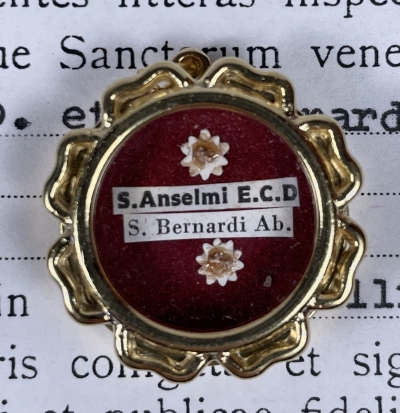Saint Anselm of Canterbury (†1109), (also called Anselmo d'Aosta and Anselme du Bec) was an Italian Benedictine monk, abbot, philosopher, and theologian of the Catholic Church, who held the office of Archbishop of Canterbury from 1093 to 1109. As archbishop, he defended the church's interests in England amid the Investiture Controversy. For his resistance to the English kings, he was exiled twice. While in exile, he helped guide the Greek bishops of southern Italy to adopt Roman rites at the Council of Bari. He worked for the primacy of Canterbury over the bishops of York and Wales but, though at his death he appeared to have been successful, Pope Paschal II later reversed himself and restored York's independence. Anselm's canonization was requested of Pope Alexander III by Thomas Becket at the Council of Tours in 1163. He may have been formally canonized before Becket's murder in 1170 but his cult was only formally sanctioned by Pope Alexander VI in 1494. Anselm was proclaimed a Doctor of the Church by Pope Clement XI in 1720; he is known as the doctor magnificus ("Magnificent Doctor") or the doctor Marianus ("Marian doctor"). His feast day is 21 April.
Saint Bernard of Clairvaux, O.Cist († 1153) was a French abbot and the primary reformer for the Cistercian order known for his contemplative mysticism, his devotion to Mary, and his reputation for eloquence. He was the first Cistercian monk placed on the calendar of saints after pope Alexander III canonized him in 1174. Pope Pius VIII bestowed on him the title Doctor of the Church and labeled him "Mellifluous Doctor" for his eloquence. He is a patron of Cistercians, Burgundy, beekeepers, candlemakers, Gibraltar, Algeciras, Queens' College, Cambridge, Speyer Cathedral, Knights Templar.








 Поменять язык на русский
Поменять язык на русский 